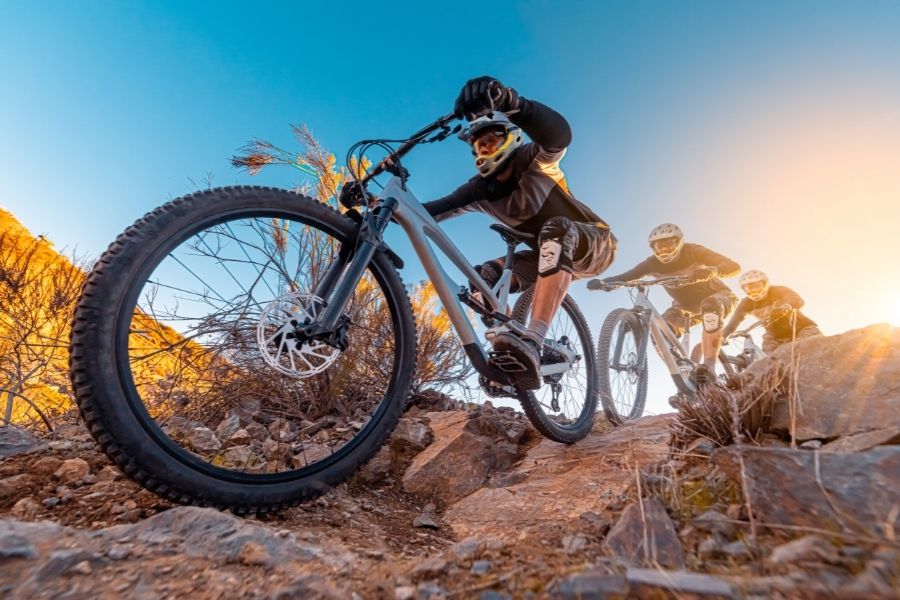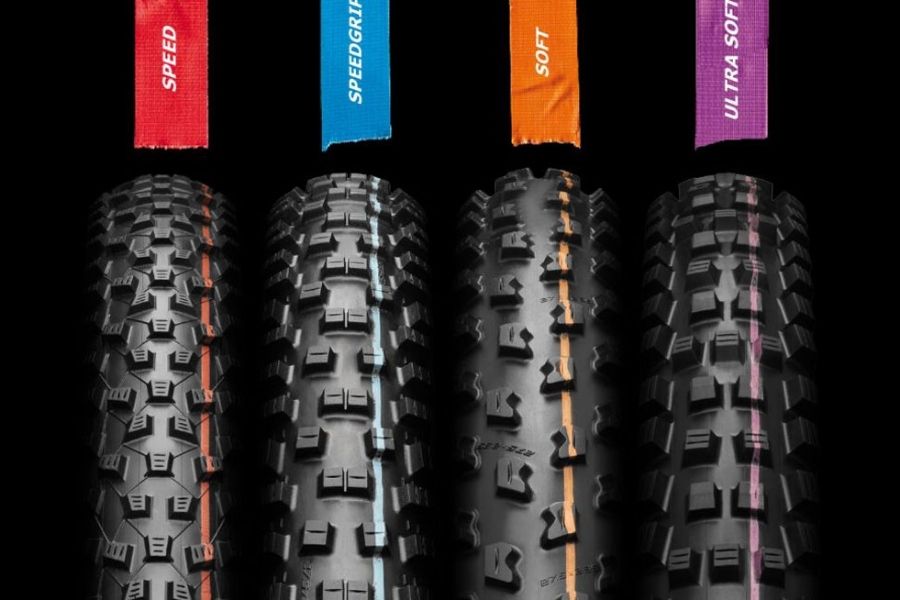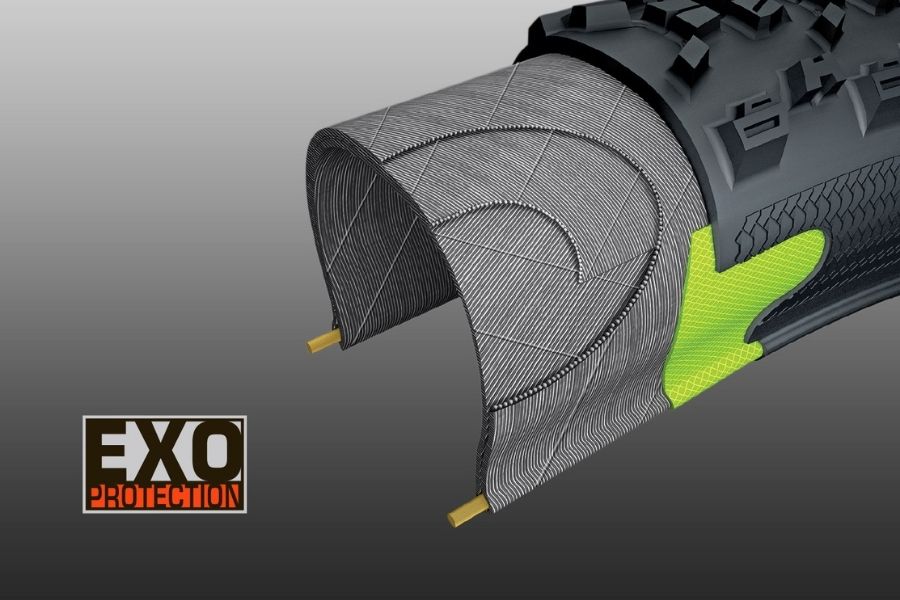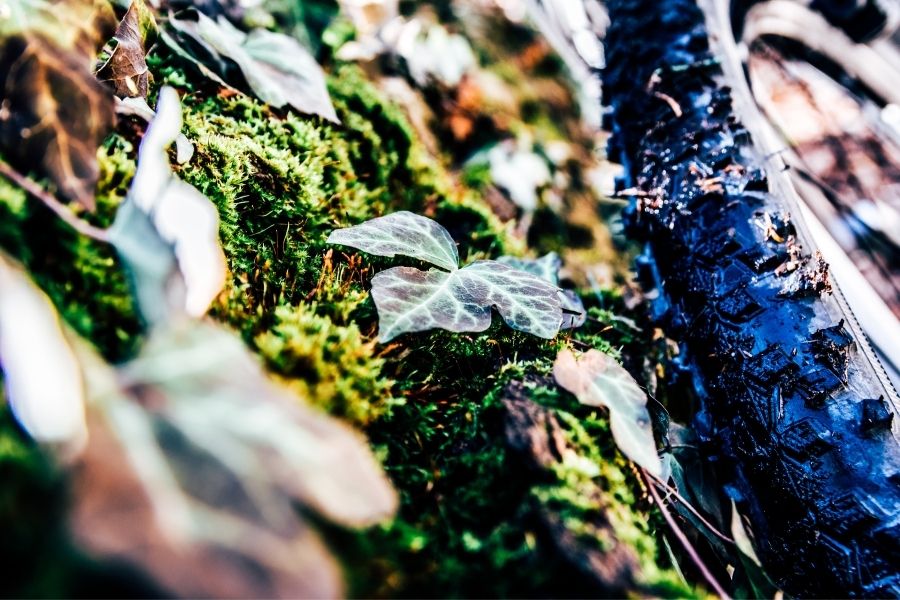Buy
The best covers For your MTB, it entails issues that you should know.
What covers do my Mountain Bike better? What measure should I choose? What are the most resistant? And the lightest?
To answer these questions, we offer you this practical purchase guide.
MTB covers: key concepts
What are the aspects that condition the performance of some covers for your mountain bike?
Measures (diameter and wide)
Separated by one
x, on the flank or lateral of the covers the figures that correspond to the
diameter Yet the
width (or ball) of the covers, expressed in inches (27.5x2.25 ", 29x2.20", etc.). The diameter must match that of the wheel or tire. As for the width, you must choose it based on the maximum that your bike admits, of the modality you practice, of the type of route or your driving style.
The diameter and width are two values that appear recorded on the side of the roof.
What are the most common measures depending on the specialty of MTB that you practice?
-
XC/Marathon. The bikes that correspond to this modality are rigid or with a 100 mm travel fork, although the 120 mm is increasingly extended. These are simple routes, with little unevenness or short and explosive tours. Regular measures of the covers: from 2 "to 2.30".
-
Trail/All Mountain. It is the habitat of semi -rigid or double suspension bicycles, with suspensions of 120 to 150 mm, prepared for more technical routes, with greater unevenness and irregular terrain. Regular measures of the covers: from 2.30 "to 2.40".
-
Enduro/descent. Here the standard is the double suspension bikes and long -distance suspensions (more than 150 mm) to negotiate very technical routes with numerous descents and obstacles. Usual covered measures: from 2.40 "to 2.60".
[Captation id = "Attachment_7540" Align = "Alignnone" Width = "900"]

Image: Michaelsvoboda / Getty images.[/caption]
Rolling band (tacos)
It is the
outer layer of the cover that has contact with the land. Manufactured with rubber and other chemicals, it has reliefs or tacos that provide grip and stability. The larger and more separate, the more adherence and the more ability to evacuate sand or mud. On the other hand, it will cost more to advance and take speed.
Housing (TPI)
The type of cover housing is also important. Is his
Inner frame. Is made with a braided of
Nylon threads which determines the weight and protection of anti -infinctions.
To know if a housing is more or less light, or more resistant to punctures and wear, it will be enough to know your
TPI. It is a numerical value that you can consult on the same flank of the roof. Alludes to the density of the housing, expressed in wires per square inch (
Threads per Inch).
It is easy to interpret. A higher TPI, more Nylon threads will have the housing and less rubber. Therefore, it will be a lighter tire, but it will also be less protected against punctures. Lower TPI implies, on the contrary, more rubber and protection, but also greater weight.
Currently, the TPI of the Mountain Bike covers move, approximately 30 (very resistant, for enduro or DH) and 120 (
Cross country).
TUBELESS READY
The covers
TUBELESS READY They are those that can be used without internal air chamber. Today is the most widespread format in the MTB panorama.
If you have to change covers and you have never tried it, we recommend that you do it thanks to its excellent anti -infincial protection and lower weight. You can identify them with the TR indication on their flank, or in the product file.
Other factors to choose new covers
In addition to the above, there are more factors that can condition our purchase decision. Do you want to know some?
Compounds
Within each brand, and also of each pneumatic model, there are
different versions depending on the compound used to manufacture the rolling band (rubber plus other substances and chemicals).
There are covers with the same tachy that, however, have different compounds to enhance a quality on another: rolling resistance, flexibility or adhesion ... The same cover model can have different versions according to the compound: more or less rolling, resistant, etc.
In big brands, such as
Maxxis either
Schwalbe, the same cover model can offer different compounds. These are identified by numbers, specific names (this is the case of maxxis, with the
simple,
double either
Triple), and even colors (for example, Schwalbe and its red addix for rolling ground, blue for mixed terrain, or oranges for broken ground).
[Captation id = "Attachment_7542" Align = "Alignnone" Width = "900"]

Image: Schwalbe covers.[/caption]
Type of ring
It is a characteristic that may seem secondary, but it is very useful. Ring
It provides stiffness on the lower edge or heel and is essential in the junction between roof and tire. There are two main types of ring:
-
Rigid: They are the usual steel rings of the most conventional and economic roofs. With them, the wheel assembly operation is somewhat more complicated, as well as their transport. In addition, weigh more than folding. In trail or enduro models they are used for a stronger coupling on the tire.
-
Flexible or folding: The internal ring is from Kevlar, generally. This makes the deck folding, lighter, easy to transport and install. It is included in competition covers or higher ranges.
Any technical sheet of a cover includes information about its ring type. In addition, it is easy to identify it in the tire itself. If it costs a lot to fold the heel, it is rigid.
Protections and reinforcements
Each brand adds to its covers various reinforcements on the flanks, or in the housing. The objective, add more
protection and durability to the deck. For example: if wheels by dry or stony terrain, you may need some covers with specific protection on the flanks and heel, and thus prevent cuts and punctures.
In this sense, the
Maxxis Exo Technology. Thus, the EXO+ housing has flexible reinforcement on the sides and a butyl insert (synthetic rubber) in the heel to protect the tire of impacts, cuts and punctures. We could also talk about the brand
Michelin and its protection of the housing
Cross Shield 2. This is based on a high -density fiber sheet and adds additional protection against pinches.
[Captation Id = "Attachment_7544" Align = "Alignnone" Width = "900"]

Image: Maxxis.[/caption]
Frequent doubts about the covers of Mountain Bike
Next, some questions that usually arise when acquiring new covers for our bicycle. of Mountain.
I am a beginner in the Mountain Bike, what covers I choose?
It is advisable to opt for a conventional cover
mixed type that guarantees, above all, security. As for the drawing, the ideal is to have medium-high profile tacos that provide a good grip, without ballasting the bike too much. A standard width of 2.20 "or 2.25" would be a good choice.
What can I do to get more grip?
If your cover frequently slips into technical sections, or when climbing slopes, the first recommendation is
slightly lower pressure of the tires (between 0.1 and 0.3 bar per deck). This will increase the contact surface with the ground and the tacos will grab the firm more strongly.
Low the pressures of your wheels and you will get greater grip.
In case you want to change for a new model, choose a
Greater width (From 2.3 "The grip is already remarkable), as well as a tachy with average or high profile, with separation between the tacos.
What pressure should I inflate them?
The ideal pressure depends on several factors: the measure of the tire, the weight of the bike, the cyclist, the route, the state of the firm and the position of the roof (it is convenient to inflate less the front wheel than the rear, to get thus greater traction).
Each cover has a recommended range of pressures that you can consult on its flank or technical file. But it is just a point of reference, which you can adapt to your needs. There is no standard ideal pressure.
[Captation id = "Attachment_7547" Align = "Alignnone" Width = "900"]

Image: Hoamatgfui / Getty Images.[/caption]
How to lighten weight on the covers?
If you want to adjust the weight of your bike in an economical way, a change of covers can be a good idea. Reducing its width is a quick and effective solution. But if you don't want to lose grip or stability we recommend mounting some
TUBELESS READY.
Dispensing with air cameras can be savings of up to 300 grams. In addition, you will forget the punctures thanks to the protection of the sealant fluid of the interior.
How long do some MTB covers last?
[IRP posts = "6321" name = "How often do you have to change the cycling covers?"]
There is no unique answer. It will depend on the frequency of use, the type of cover, the compound, etc. But if we had to calculate the approximate useful life, a
biker That he frequently could prolong the life of his covers about two years.
 Image: Michaelsvoboda / Getty images.[/caption]
Image: Michaelsvoboda / Getty images.[/caption]
 Image: Schwalbe covers.[/caption]
Image: Schwalbe covers.[/caption]
 Image: Maxxis.[/caption]
Image: Maxxis.[/caption]
 Image: Hoamatgfui / Getty Images.[/caption]
Image: Hoamatgfui / Getty Images.[/caption]












